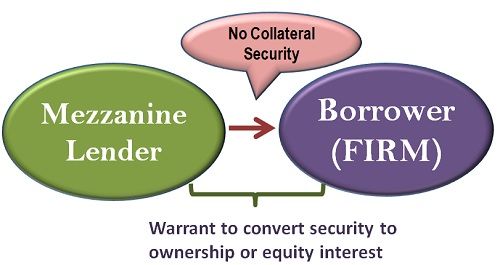Definition: The Mezzanine Financing is a quick way to raise loans for the expansion of current business operations, from the investors or the financial institution such as a bank, without keeping any collateral security against it. But however, the lender has the right to convert the debt capital to ownership or equity interest in the company, in case the borrower defaults in the payment of the loan.
Since, the mezzanine financing includes no collateral security and involves minimum due diligence, the risk is high for the lender. Thus, higher interest rate is charged on the amount lent to the borrower.
The mezzanine financing is the least risky among the senior loans taken by the firm because it has a legal written warrant against the security. Also, the company enjoys the flexibility with respect to the payment made to the mezzanine lender.
The advantage of using the mezzanine financing is that strategic assistance from the financial institutions or experts can be acquired in the business operations. And also, the value of the shareholder’s stock increases with the use of mezzanine financing. The mezzanine loan is shown on the asset side of the balance sheet.
The mezzanine financing does suffer from limitations, one of the major disadvantages of this kind of loan is, it is very expensive as compared to the other type of loans. And with the default of payment, the mezzanine lender can dilute the equity in the company. Also, it is a lengthy process as it takes several days to get the loan in hand.


Leave a Reply